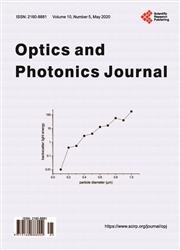Bubble Glow at Hydrothermal Vents as the PeTa Radiation
引用次数: 3
Abstract
The paper presents a physical model of a natural phenomenon, the glow of bubbles at hydrothermal vents formed during underwater volcanic activity. The basis of the model is characteristic non-equilibrium radiation under first order phase transitions that since 2010 has been referred to as the PeTa (Perelman-Tatartchenko) effect. This is the fourth paper in a series developing the model for similar physical phenomena: cavitational luminescence (CL), multi-bubble sonoluminescence (MBSL), single-bubble sonoluminescence (SBSL) and laser-induced bubble luminescence (LIBL). The previous three papers were published during 2017-2018 in this Journal. In the third one we have shown that above mentioned physical effects can be generalized as a phenomenon that we have titled “Vapour bubble luminescence” (VBL). VBL is very clearly represented in a non-equilibrium phase diagram. The essence of VBL is as follows: when there is a local decrease in pressure and/or an increase of temperature in a tiny volume of a liquid occurs, one or several bubbles filled with vapour will appear. Subsequently a very rapid pressure increase and/or temperature decrease in the same volume of liquid leads to supersaturation of the vapour inside the bubble. Upon reaching critical vapor density, instantaneous vapour condensation and emission of the phase transition energy that is accompanied by a flash (this is the PeTa effect) results in a sharp pressure decrease and the bubble collapses due to the pressure drop. This process is accompanied by a shock wave in the liquid. A similar effect occurs if bubbles filled with hot steam, for example from a cappuccino machine, are injected into a relatively large volume of cold water. The VBL model explains all experimental data concerning CL/MBSL/SBSL/LIBL and the relatively new natural phenomenon, the glow of bubbles at hydrothermal vents. Several model experiments demonstrate the PeTa effect under similar conditions. Additionally, we define the PeTa effect in all its manifestations on a non-equilibrium phase diagram. This clarifies which niches can contain VBL processes. We also demonstrate the window of transparency (WT) for the PeTa radiation during crystallization of a supercooled tellurium melt and propose the design of a cavity-free pulsed laser on the basis of similar crystallization processes.作为PeTa辐射的热液喷口气泡辉光
本文提出了一种自然现象的物理模型,即水下火山活动期间形成的热液喷口气泡的辉光。该模型的基础是一阶相变下的特征非平衡辐射,自2010年以来被称为PeTa(Perelman-Tatartchenko)效应。这是一系列开发类似物理现象模型的论文中的第四篇:空穴发光(CL)、多气泡声致发光(MBSL)、单气泡声致荧光(SBSL)和激光诱导气泡发光(LIBL)。前三篇论文发表于2017-2018年。在第三个例子中,我们已经证明了上述物理效应可以被概括为一种现象,我们称之为“汽泡发光”(VBL)。VBL在非平衡相图中表现得非常清楚。VBL的本质如下:当微小体积的液体出现局部压力下降和/或温度升高时,会出现一个或多个充满蒸汽的气泡。随后,在相同体积的液体中非常快速的压力增加和/或温度降低导致气泡内的蒸汽过饱和。在达到临界蒸汽密度时,伴随着闪光的瞬间蒸汽冷凝和相变能量的发射(这是PeTa效应)导致压力急剧下降,气泡因压力下降而坍塌。这个过程伴随着液体中的冲击波。如果将充满热蒸汽的气泡(例如来自卡布奇诺咖啡机的热蒸汽)注入相对大体积的冷水中,也会产生类似的效果。VBL模型解释了关于CL/MBSL/SBSL/LBL和相对较新的自然现象,即热液喷口气泡的发光的所有实验数据。几个模型实验证明了在类似条件下的PeTa效应。此外,我们在非平衡相图上定义了PeTa效应的所有表现形式。这澄清了哪些利基市场可以包含VBL过程。我们还演示了过冷碲熔体结晶过程中PeTa辐射的透明窗口(WT),并在类似结晶过程的基础上提出了无腔脉冲激光器的设计。
本文章由计算机程序翻译,如有差异,请以英文原文为准。
求助全文
约1分钟内获得全文
求助全文

 求助内容:
求助内容: 应助结果提醒方式:
应助结果提醒方式:


